Composition
The Council of Governors is composed of 10 members, selected by the President for a term of 2 years from among the governors of the several states and territories of the United States and the Mayor of the District of Columbia. [3] [4] [5] No more than five members may be from the same political party. [3]
Two members of the Council, of different political parties, are designated by the President to serve as Co-Chairs of the Council. [3]
The work of the Council is coordinated by an Executive Director designated by the Secretary of Defense. [3]
Members
| Member | Party | Tenure begun | State | FEMA region | Notes | References | |
|---|---|---|---|---|---|---|---|
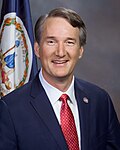 | Glenn Youngkin | Republican | February 19, 2025 | Virginia | III | Co-Chair | [6] |
 | Josh Stein | Democratic | February 19, 2025 | North Carolina | IV | Co-Chair | [6] |
 | Ron DeSantis | Republican | February 19, 2025 | Florida | IV | [6] | |
 | Kathy Hochul | Democratic | February 19, 2025 | New York | II | [6] | |
 | Brian Kemp | Republican | February 19, 2025 | Georgia | IV | [6] | |
 | Jeff Landry | Republican | February 19, 2025 | Louisiana | VI | [6] | |
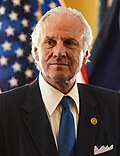 | Henry McMaster | Republican | February 19, 2025 | South Carolina | IV | [6] | |
 | Wes Moore | Democratic | February 19, 2025 | Maryland | III | [6] | |
 | Josh Shapiro | Democratic | February 19, 2025 | Pennsylvania | III | [6] [7] | |
 | Gretchen Whitmer | Democratic | July 8, 2021 | Michigan | V | Reappointed February 19, 2025 | [8] [6] |
Former members
| Member | Party | Tenure begun | Tenure ended | State | FEMA region | Notes | References | |
|---|---|---|---|---|---|---|---|---|
 | Mike DeWine | Republican | February 22, 2019 | February 19, 2025 | Ohio | V | Co-Chair Reappointed July 8, 2021 | [8] [9] |
 | Tim Walz | Democratic-Farmer-Labor | February 22, 2019 | February 19, 2025 | Minnesota | V | Co-Chair Reappointed July 8, 2021 | [8] [9] |
 | Bill Lee | Republican | August 14, 2020 | February 19, 2025 | Tennessee | IV | [10] | |
 | John Bel Edwards | Democratic | July 8, 2021 | February 19, 2025 | Louisiana | VI | Previously served on Council from 2017 to 2019 | [8] |
 | John Carney | Democratic | July 8, 2021 | February 19, 2025 | Delaware | III | [8] | |
 | Kate Brown | Democratic | July 8, 2021 | February 19, 2025 | Oregon | X | [8] | |
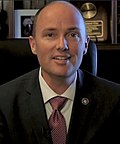 | Spencer Cox | Republican | July 8, 2021 | February 19, 2025 | Utah | VIII | [8] | |
 | Phil Scott | Republican | July 8, 2021 | February 19, 2025 | Vermont | I | [8] | |
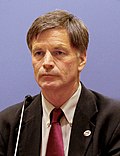 | Mark Gordon | Republican | July 8, 2021 | February 19, 2025 | Wyoming | VIII | [8] | |
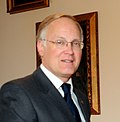 | Jim Douglas | Republican | February 4, 2010 | January 6, 2011 | Vermont | I | Co-Chair | [11] |
 | Jay Nixon | Democratic | February 4, 2010 | January 9, 2017 | Missouri | VII | [11] | |
 | Terry Branstad | Republican | March 9, 2011 | May 24, 2017 | Iowa | VII | Co-Chair | [12] |
 | Mike Rounds | Republican | February 4, 2010 | January 8, 2011 | South Dakota | VIII | [11] | |
 | Brad Henry | Democratic | February 4, 2010 | January 10, 2011 | Oklahoma | VI | [11] | |
 | Luis Fortuño | NPP/Republican | February 4, 2010 | January 2, 2013 | Puerto Rico | II | [11] | |
 | Bev Perdue | Democratic | February 4, 2010 | January 5, 2013 | North Carolina | IV | [11] | |
 | Christine Gregoire | Democratic | February 4, 2010 | January 16, 2013 | Washington | X | Co-Chair | [11] |
 | Neil Abercrombie | Democratic | March 9, 2011 | December 1, 2014 | Hawaii | IX | [12] | |
 | Jan Brewer | Republican | February 4, 2010 | January 5, 2015 | Arizona | IX | [11] | |
 | Pat Quinn | Democratic | February 21, 2013 | January 12, 2015 | Illinois | V | ||
 | Martin O'Malley | Democratic | February 4, 2010 | January 21, 2015 | Maryland | III | Co-Chair | [11] |
 | Matt Mead | Republican | March 9, 2011 | May 1, 2017 | Wyoming | VIII | [12] | |
 | Brian Sandoval | Republican | February 21, 2013 | May 1, 2017 | Nevada | IX | [13] | |
 | Terry McAuliffe | Democratic | February 24, 2015 | May 1, 2017 | Virginia | III | [14] | |
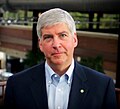 | Rick Snyder | Republican | February 24, 2015 | May 1, 2017 | Michigan | V | [14] | |
 | Eric Greitens | Republican | May 1, 2017 | June 1, 2018 | Missouri | VII | [15] | |
 | Bill Walker | Independent | May 1, 2017 | December 3, 2018 | Alaska | X | [15] | |
 | Mark Dayton | Democratic-Farmer-Labor | February 24, 2015 | January 7, 2019 | Minnesota | V | [14] | |
 | Rick Scott | Republican | May 1, 2017 | January 8, 2019 | Florida | IV | [15] | |
 | Dannel Malloy | Democratic | February 4, 2010 | January 9, 2019 | Connecticut | I | Co-Chair | [11] |
 | Steve Bullock | Democratic | February 24, 2015 | January 4, 2021 | Montana | VIII | [14] | |
 | Mary Fallin | Republican | May 1, 2017 | January 14, 2019 | Oklahoma | VI | Co-Chair | [15] |
 | Bill Haslam | Republican | 2014 | January 19, 2019 | Tennessee | IV | [16] | |
 | Charlie Baker | Republican | 2016 | February 22, 2019 | Massachusetts | I | [9] | |
 | Doug Ducey | Republican | February 22, 2019 | July 7, 2021 | Arizona | IX | [9] | |
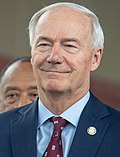 | Asa Hutchinson | Republican | July 12, 2018 | July 7, 2021 | Arkansas | VI | [17] | |
 | David Ige | Democratic | February 22, 2019 | July 7, 2021 | Hawaii | IX | [9] | |
 | Ned Lamont | Democratic | February 22, 2019 | July 7, 2021 | Connecticut | I | [9] | |
 | Mike Parson | Republican | February 22, 2019 | July 7, 2021 | Missouri | VII | [9] | |
 | JB Pritzker | Democratic | February 22, 2019 | July 7, 2021 | Illinois | V | [9] | |
 | Pete Ricketts | Republican | February 22, 2019 | July 7, 2021 | Nebraska | VII | [9] | |
Federal officials
| Position | Member | |
|---|---|---|
| USNORTHCOM Commander |  | General Terrence J. O'Shaughnessy |
| Commandant of the United States Coast Guard |  | Admiral Karl L. Schultz |
| Chief of the National Guard Bureau |  | General Joseph L. Lengyel |